BASIC CONCEPTS
Non-imaged elements
Elements, such as text and graphics, may begin at the edge of
the physical page on two sides, and off the physical page on the
top and on the left side (except with 8.5 by 14 inch paper).
However, if any part of a printed element begins off the system
page, no part of the element images.
• If a line of variable data begins off the system page, no part
of the line prints.
• If a ruled line begins off the system page, no part of the
ruled line prints.
• A ruled line near the edge of the system page must hold a
position of at least one-half the line thickness inside the
system page to print. For example, a bold line is eight dots
thick and, therefore, it must hold a position of at least four
dots inside the system page leading edge.
One common cause of print elements accidentally beginning off
the system page is the improper use of the OUTPUT SHIFT
command. This command shifts the entire page contents relative
to the boundaries of the system page. When you enter a
negative shift value (as is often the case for the back side of
duplex pages), and that value exceeds the left margin, no text
element prints. When using a negative value for the SHIFT
command, be sure that it is less than the value of the left margin.
Imaging error messages
If any part of a print line originates off the system page, the
following message displays:
OS6905 DATA ORIGIN OFF PAGE -- CHECK OUTPUT
This message line appears only once during a print job. It
indicates that a print line origin problem exists within the form
description, or that an excessive SHIFT value has been specified.
Registration shift and skew
The registration of a printed image can appear shifted or skewed
on a page if the sheet of paper is misaligned as it enters the
printer. Because of the design of the LPS feeder, the image
registration on each page can vary slightly both horizontally and
vertically by up to .05 inches (1.0 mm). The image can also slant
or skew slightly by up to .05 inches (1.0 mm) in opposite
directions, for a maximum skew of 0.1 inches (2.0 mm).
Note that the following figures are the same specifications which
have been rotated to show portrait and landscape orientations.
The shift and skew variances described here are within allowable
specifications. However, as this can affect the registration of
variable data in preprinted forms and the placement of images
close to the edge of the page, it is important to make allowances
for this condition.
XEROX 4050/5090/4450/4650 LPS FORMS CREATION GUIDE 1-7




















